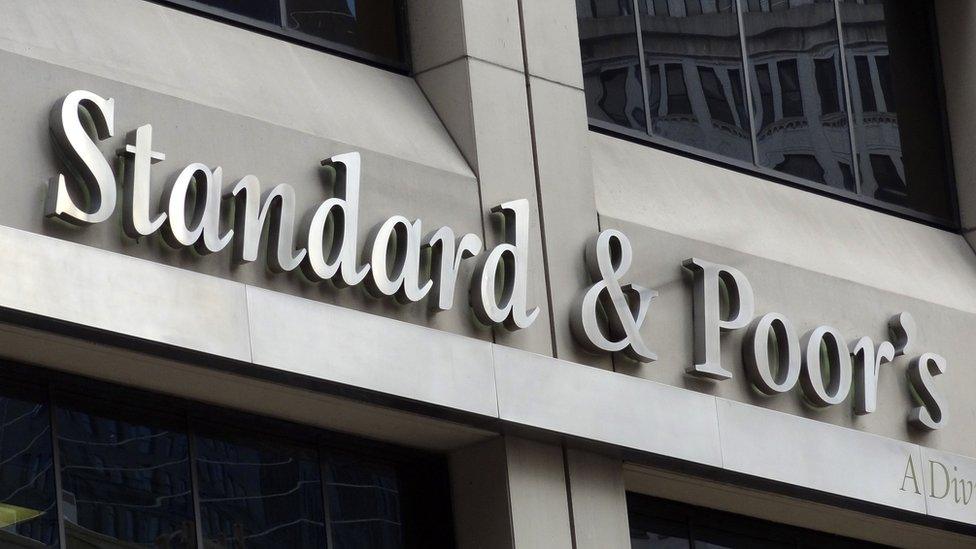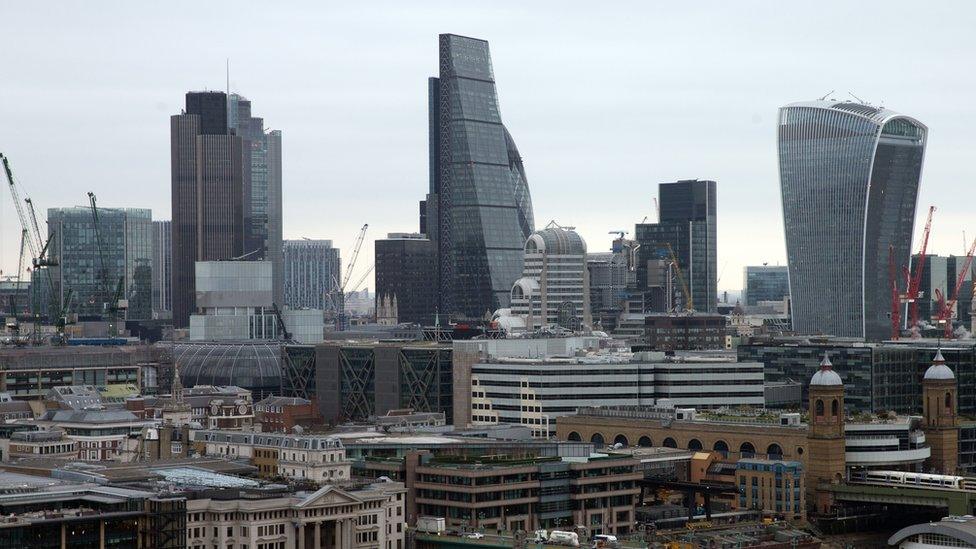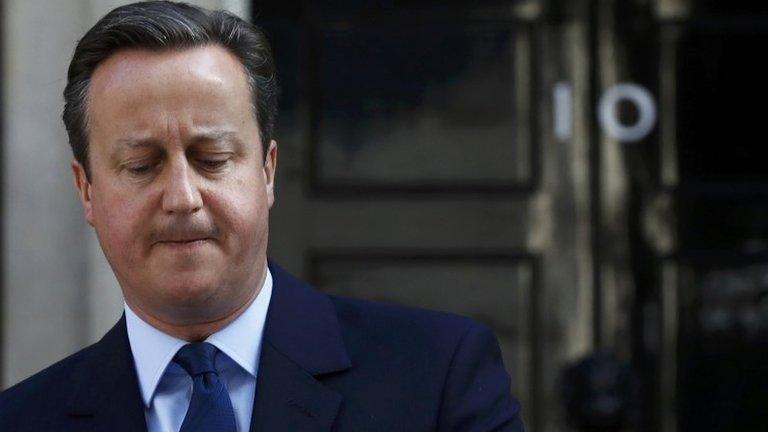What are credit ratings agencies?
- Published
What does a ratings agency warning mean? The BBC’s Andrew Verity explains
Moody's, one of the big three credit ratings agencies, has cut its outlook for the UK economy from "stable" to "negative".
Credit rating agencies, in essence, rate a country on the strength of its economy.
More specifically, they score governments (or large companies) on how likely they are to pay back their debt.
A rating affects how much it costs governments to borrow money in the international financial markets. In theory, a high credit rating means a lower interest rate (and vice versa).
This is because of concerns at the impact that leaving the European Union may have on the UK economy. Moody's warned that the referendum result may have "negative implications for the country's medium-term growth outlook".
Who are the credit rating agencies?
In addition to Moody's, the other two main credit rating agencies are Standard & Poor's and Fitch Ratings.
All three are private companies, not government agencies. Moody's and Standard & Poor's both have their headquarters in New York, while Fitch has two official HQs, one in New York and the other in London.
What are their scoring systems?
Each agency gives countries around the world a specific credit rating score. These range from a top mark of "AAA", which stands for "prime", down to the lowest reading of "D", which stands for "in default".

S&P says its AAA rating of the UK economy is at risk
In between there are scores such as "BBB" or "CC". Moody's has at total of 21 ratings.
The agencies also give outlook-assessments. These are either "positive", "stable", or "negative". They indicate whether the agency in question thinks it may soon raise its rating (positive), downgrade it (negative), or leave it the same (stable) for the country in question.
In the case of Moody's and the UK, the agency currently scores the UK at "Aa1", the second highest rating on its scale, which stands for "high grade".
Yet, while Moody's previously saw no change to that Aa1 rating, it has now warned that it may lower it.
A country's credit rating can affect how much it costs a governments to borrow money on the global markets.
More specifically, the worse a nation's credit rating, the more likely it is that the country in question has to offer a higher rate of return on its bonds in other to persuade people and financial institutions to buy them.
This is because the lower a country's credit rating, the more the agencies are concerned about its economy, and in turn the taxes that the government in question can raise. Ratings can be a warning system for potential investors, and make it more expensive for poorly-rated nations to borrow money.
Although Moody's is the first of the big three ratings agencies to make an official change to its position on the UK post-referendum, the Financial Times reported on Friday that Standard & Poor's considers its current top rating for the UK as "no longer tenable".
Currently S&P rates the UK as AAA (negative), while Fitch Ratings' score is AA+ (stable). For Fitch, AA+ is its second-highest score.
How do the agencies form their judgements?
They have committees of experts who determine the actually rating for each country or large company. S&P says its committees typically consist of between five and eight people.
They base their assessment on a range of financial and business factors that may influence a government or company's ability to repay its debt, such as the UK voting to leave the European Union, or a business announcing a huge loss.
When were they formed?
Standard & Poor's is the oldest. It traces its history back to 1860 when financial analyst Henry Poor wrote a history of the finances of railroads and canals in the US as a guide for investors.

S&P traces its history back 156 years
He then formed a business called HV and HW Poor.
Meanwhile, the Standard Statistics Bureau was set up in 1906 to examine the finances of non-railroad companies.
The two businesses joined forces in 1940 when S&P was formed.
Moody's was started in 1909 by John Moody, who published an analysis of the tangled and uncertain world of railway finances, grading the value of its stocks and bonds.
Fitch, with another eponymous founder, John Fitch, was set up in 1913.
Why are they the "big three"?
There are hosts of other ratings agencies, but S&P, Moody's and Fitch have about 95% of the global market.
S&P and Moody's have about 40% each, while Fitch has around 15%.

The agencies are no doubt looking at the referendum's likely impact on the City of London
They are so dominant because they were the first to be officially endorsed by the US financial watchdog, the Securities and Exchange Commission (SEC).
In 1975, the SEC acknowledged the three as "Nationally Recognised Statistical Organisations".
So a rating from any of the three is considered to be the gold standard.
How do the credit rating agencies make their money?
They charge companies for their ratings - it's as simple as that.
This has led to critics suggesting that the agencies are tempted to give firms over-generous scores in order to win repeat business, something they all strenuously deny.
Weren't they criticised during the financial crisis of 2007-08?
They were indeed, for giving top AAA ratings to debt packages that turned out to include billions of dollars of bad US mortgages.
When the US homeowners in question started to default on their repayments it sparked the financial crisis.
The credit rating agencies were heavily criticised by politicians, and had to settle a number of lawsuits.
- Published25 June 2016
